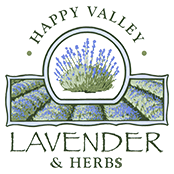|

November 2011
Keyhole Gardening
Easy African Design for backyard Veggie Bed
If building vegetable box beds are on your Fall-to-do list; here is a creative and practical twist that may appeal to you and suit your yard! It is an old idea and a new one originally used in especially Lesotho, South Africa where resources are as precious as food. It has been very successful there with the high HIV young adult mortality leaving a higher population of children & grandparents to grow food without continual hard labour.
A Keyhole garden is definitely do-able as a family weekend project in our time scarcity world, affordable for an elementary school class project or practical for anyone with limited physical mobility or strengths once built with a bit of group effort… And easy to protect from cruising hungry deer here!
It begins with a 6 to 8 foot circle of level ground, positioned in good growing light. An inner 2 foot circle is the center with a “keyhole” or 2 foot pie wedge piece marked as your entrance from the outside circle to this inner center circle. You essentially build your garden up and around you and the center. Like a traditional rectangular box bed you can reach around from all the sides. The bonus of the Keyhole design is the compost nutrient rich center built into the design.
In Africa they take 8x 6 foot strong branches; you could use stakes, pounding them into the ground closely around the marked inner 2 foot circle. They then bind or bend branch “rings” inside this circle of stakes using medium strong branches in circles 6 -8 inches apart building up to create a “cage” within 2 foot of the tops of the poles. Wire these branch rings in place to hold this basket shape. This is your nutrient rich composting center to feed your keyhole bed planting! Next line this inner basket with straw or small branches at the bottom and up the sides a ways. You will be able to reach this circle from your keyhole entrance. Leave filling this with more yummy materials until you have your outer walls & first layer of growing soil in place ...
OK back to your outer walls. In Lesotho, they use what they have…small boulders, old bricks, larger stones. They make a trench along the outer circle perimeter to help stabilize the bottom edge before building the outer wall up. Some were a combination of boulders around the outer circle edge with regular chimney style bricks lining the keyhole sides and square end in front of the “compost center”. You want to easily reach this “basket” to add water & layer more rough nutrients. In Lesotho, grey water helps in drought times to have any living green thing: especially that can feed your family! Water added to the center easily radiates out through the nutrients into the soil of your growing garden area.
As you build up the outer walls and keyhole area with bricks or boulders, you can start layering your soil area inside as you go. Line the bottom with heavy landscape cloth if needed to protect from nearby hungry tree roots or simply start with cardboard on the ground level if you are on a lawn area to smother any weeds. Did you notice? No digging down!
First layer coarse compost in the inside bottom of the growing horseshoe area: straw, even seedy hay as it will be deep enough to not sprout tons of wild grasses and help retain water later in the summer growing season … Then layer soil with old manures, old potting soil, autumn leaves especially from deciduous trees that break down easily … just like the “Lasagne” soil building in layers for regular square box beds. Save your best soil for the top foot of the finished bed.
You can slightly slopes the outer sides in to prevent especially rocks from falling out. Pack the inside soil against the rocks/bricks as you build up. You want to reach 4 feet as a finished outside height…around waist height. No bending to tend your veggies! This design is also wheelchair accessible on the outside and you could widen the keyhole area as needed in your design for access to the middle as well.
In your nutrient rich compost center, build at the same level as the outer soil as you go but use your richer raw ingredients which can include not-quite finished manures, lawn clippings, vegetable peelings, a touch of wood ash, seaweed from stormy beaches … You can layer straw/hay along the sides inside as a filter to hold these ingredients separate from the soil outside the cage. You could top this area with a “holey” bucket with fresh manure or simply a wire mesh so you can pour water through it but discourage rodents and digging racoons … something in Lesotho they don’t have to deal with! Keep adding goodness to this area in the active growing season as your fertilizer.
For Mr. Deer & family: “plant” some metal stakes inside the perimeter as you build the outer edge so you can attach some gardener friendly fabric webbing style fencing (Tower Fencing Products on Goldstream) that you can clip on/off for easy gardening access. By now you only need a piece 4 foot high!
The very top of your soil bed can be slightly banked up to the composting center if you wish or simply level…I saw both styles. More importantly in the planning planting stage, take into consideration the growing plant heights…like placing Tomatoes around the inner center area with salad greens and herbs tumbling along the outer edge …
It’s the perfect time to plant garlic now as a first crop or buy winter veggie starts like Kale, Purple sprouting Broccoli, and Swiss chard…a bit late for anything from seeds. No wait: Broad beans, plant Broad beans from seed now!
If you simply decide to let this all settle for the winter, hibernate with a good book on planting veggies in the Pacific Northwest and plan to plant in the spring; I would cover the top soil with a good layer of leaves and maybe chicken wire with spare rocks to hold the leaves on in winter winds. You could cap the nutrient basket too so all the goodness doesn’t wash away in our heavy rains…In the spring, brush the leaves aside, add them to your nutrient center and …Did you notice? No weeds!
And it is easy to add more topsoil as needed if the soil has settled and shrunk in depth over winter or as you change your crops ... PLANTING TIME!
One design I saw used brightly coloured wool strands to radiate out from the center & mark planting wedges! Very colourful: very Africa!
Keyhole Project Materials
-
Family group or friends!
-
String & Wire & Cardboard
-
Stakes or Branches
-
Rocks or Bricks
-
Straw or old Hay
-
Manure & Compost
-
Leaves & Lawn clippings
-
Seaweed
-
Soil
-
…and a sunny autumn day!
Have some fun, Lynda!
Originally published in the November 2011 edition of the Metchosin Muse
Printable Version 
|

